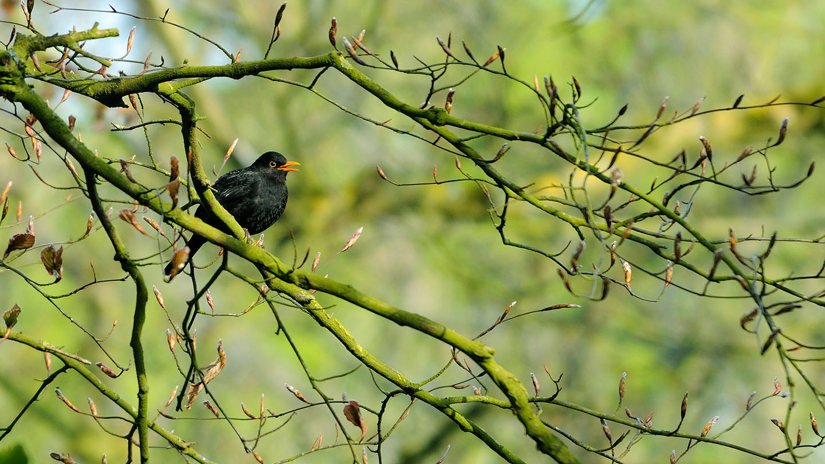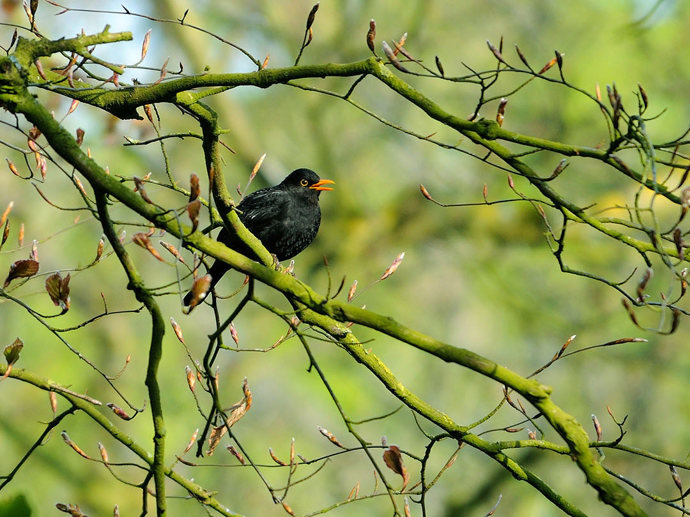Common name: swift, common swift
Scientific name: Apus apus
Family: Apodidae
Habitat: grassland, farmland, wetland, urban areas
Diet: flying insects
Predators: hobby
Origin: native
Super-fast flyers living almost their entire life on the wing. Swifts are summer visitors to the UK whose numbers have suffered a worrying decline.
Common name: swift, common swift
Scientific name: Apus apus
Family: Apodidae
Habitat: grassland, farmland, wetland, urban areas
Diet: flying insects
Predators: hobby
Origin: native
When flying swifts appear as black silhouettes, with long, pointed wings and a forked tail. When seen at close quarters a pale throat patch is visible.
Not to be confused with: swallows, which have a longer tail and a lighter colouration. Sand martins and house martins can also appear similar to swifts, but both have white undersides, while the swift is universally dark expect for its small throat patch.
Swifts use their speed and agility to catch flying insects on the wing. They can take a range of prey, but avoid stinging insects like bees and wasps.

Credit: Phil Savoie / Naturepl.com
Swifts mate for life and will return to the same nest site each year. Historically, swifts would have nested in holes in large trees, cliffs and crevices. However, today's UK population depends almost entirely on buildings for nest sites.
The nest is built under the eaves of old buildings and is made from any materials the swift can catch in flight. The birds then use their own saliva to hold the nest together.
Two to three eggs are normally laid, hatching after three to four weeks. The chicks will spend up to eight weeks in the nest before fledging.
Except for when on the nest, swifts spend their entire life in flight. They never come to the ground and even sleep on the wing.
Swifts are summer migrants, flying to the UK each summer to breed. They spend the rest of the year in sub-Saharan Africa. The first birds tend to arrival in April before departing in August and September.
It's possible that the behaviour of migratory birds like swifts is being affected by climate change. You can help us monitor this impact by recording the first and last time you see a swift on our Nature's Calendar website.

Credit: Robin Chittenden / Naturepl.com
Swifts can be found across the UK. As they rely on buildings for nesting, they are often seen flying high above towns and villages.
Swifts are the UK's fastest bird in level fight, recorded at nearly 70 miles per hour. The peregrine falcon is faster, but only when aided by gravity when flying downward.
To see swifts, be prepared to look up as these birds never come to the ground. One of the best times to spot the species is at dusk. Around this time, swifts gather in 'screaming parties', darting through the sky and issuing a high-pitched screaming call. The exact purpose of these parties is unknown.


External link
Record the comings and goings of key feathered friends and help scientists track the effects of climate change on wildlife.
The UK's swift population has suffered a worrying decline, with a fall of more than 51% estimated between 1995 and 2015.
A lack of nesting sites is seen as key factor in this trend, with modern buildings lacking the small gaps swifts need to build their nests. The species is also likely to have been affected by a decline in the numbers of its insect prey.